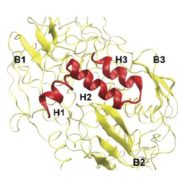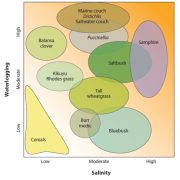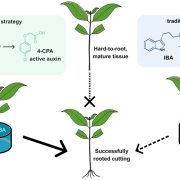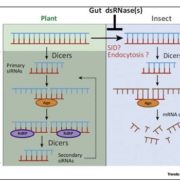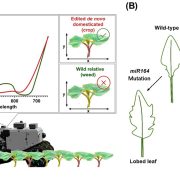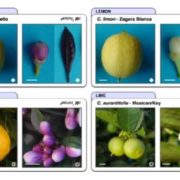Review: Stem cells for crop improvement
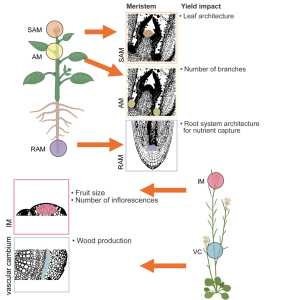 Plants, like animals, have small populations of stem cells capable of differentiating into other tissues, but in plants these stem cell populations are even more long-lived and versatile. Stem cells in plants include the meristems (shoot and root apical meristems, inflorescence and axillary meristems) as well as the vascular cambium. Collectively, they produce all the post-embryonic tissues of the plant. The biology of plant stem cells and how they can be manipulated for crop improvement is the topic of a review by Lindsay et al. Much of the review focuses on our current understanding of stem cell function and regulation, largely determined through genetic studies. The review also discusses applications of stem cell biology. Specifically, manipulation of stem cell actions can contribute to novel, beneficial plant architectures, such as increased inflorescence branching to produce more seeds, or increased ear size to produce more kernels. Additionally, manipulation of stem cell activities has been extremely helpful in accelerating the regeneration of plants from tissue culture following gene editing or transformation. (Summary by Mary Williams @PlantTeaching) Mol. Plant 10.1016/j.molp.2023.12.014
Plants, like animals, have small populations of stem cells capable of differentiating into other tissues, but in plants these stem cell populations are even more long-lived and versatile. Stem cells in plants include the meristems (shoot and root apical meristems, inflorescence and axillary meristems) as well as the vascular cambium. Collectively, they produce all the post-embryonic tissues of the plant. The biology of plant stem cells and how they can be manipulated for crop improvement is the topic of a review by Lindsay et al. Much of the review focuses on our current understanding of stem cell function and regulation, largely determined through genetic studies. The review also discusses applications of stem cell biology. Specifically, manipulation of stem cell actions can contribute to novel, beneficial plant architectures, such as increased inflorescence branching to produce more seeds, or increased ear size to produce more kernels. Additionally, manipulation of stem cell activities has been extremely helpful in accelerating the regeneration of plants from tissue culture following gene editing or transformation. (Summary by Mary Williams @PlantTeaching) Mol. Plant 10.1016/j.molp.2023.12.014


